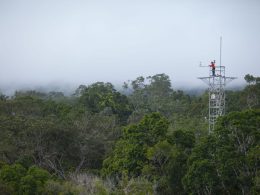Forestry Australia has introduced a new initiative titled “Enhancing Native Forest Resilience” aimed at expanding Australia’s carbon credit capacity across various forest tenures including state forests, private native forests, lands managed by Traditional Owners, national parks and conservation reserves.
Forestry Australia is an independent not-for-profit professional association of more than 1,200 forest scientists. This initiative of the organisation, announced as part of a submission to the Australian Government’s Emissions Reduction Assurance Committee (ERAC), seeks to develop new methods under the Australian Carbon Credits Units (ACCU) Scheme.
This model is based on research showing that carefully managed forests can store more carbon. It focuses on practices that enhance forest health and resilience. Forestry Australia President Michelle Freeman said there were huge untapped opportunities. “There is a growing body of published work that shows our forests are not only more resilient if they are actively managed, but they can deliver greater carbon abatement benefits. Our proposed new Enhancing Native Forest Resilience method is specifically focussed on unlocking the carbon potential across all types of native forests – when they remain forest land,” Dr. Freeman said.
She added, “This would provide additional revenue streams for our national parks, state forests and private forests, specifically to support more investment in ecologically sustainable forest management, thereby enhancing landscape resilience, biodiversity and social outcomes from our forests. It would maximise carbon market opportunities to more land owners, from state government agencies managing state forests and national parks, as well as community groups, not-for-profits, private land owners and First Nations Peoples.”
This initiative targets three key areas: restorative forestry practices to enhance ecological health and carbon storage in forests impacted by wildfires and disturbances; adaptive harvesting practices to optimise carbon storage while ensuring sustainable wood production; and improved utilisation of harvested wood products to promote the production of higher-grade, longer-lasting wood products. These strategies are supported by research showing that actively managed forests are more resilient and effective at sequestering carbon.
Dr. Freeman highlighted the multifaceted benefits of the proposed method, stating, “If we extend the potential options for earning carbon credits, we not only generate extra eligible carbon abatement opportunities for Australia, but we also enhance the resilience and ecological values of the Australian forest landscape while continuing to supply local high-quality wood products from areas where that is appropriate, it’s a win-win-win.”
She further added, “Active management can also support sustainable livelihoods for regional communities and open up options for self-determination by land holders and managers to achieve the best possible and holistic outcomes.”




















